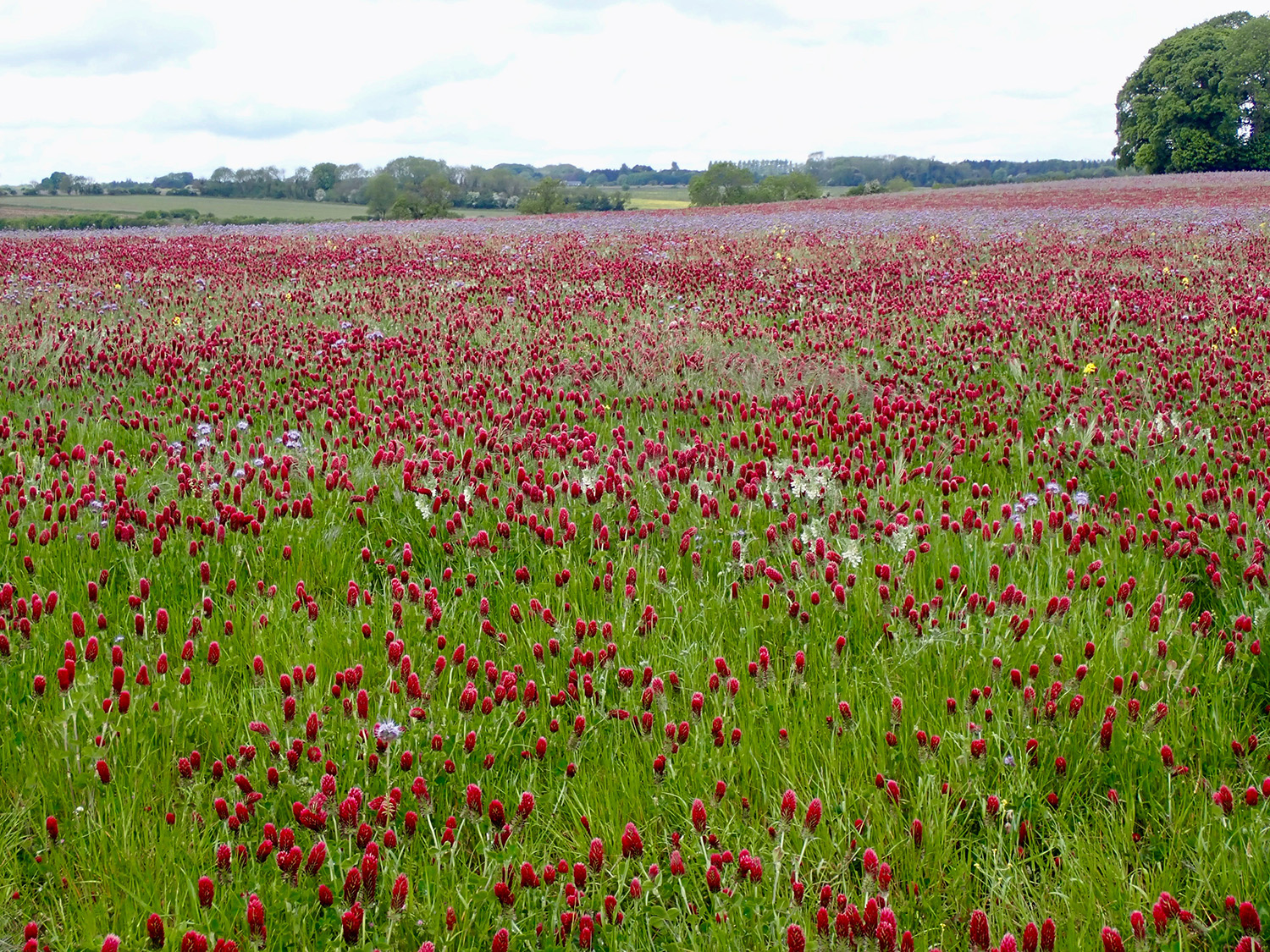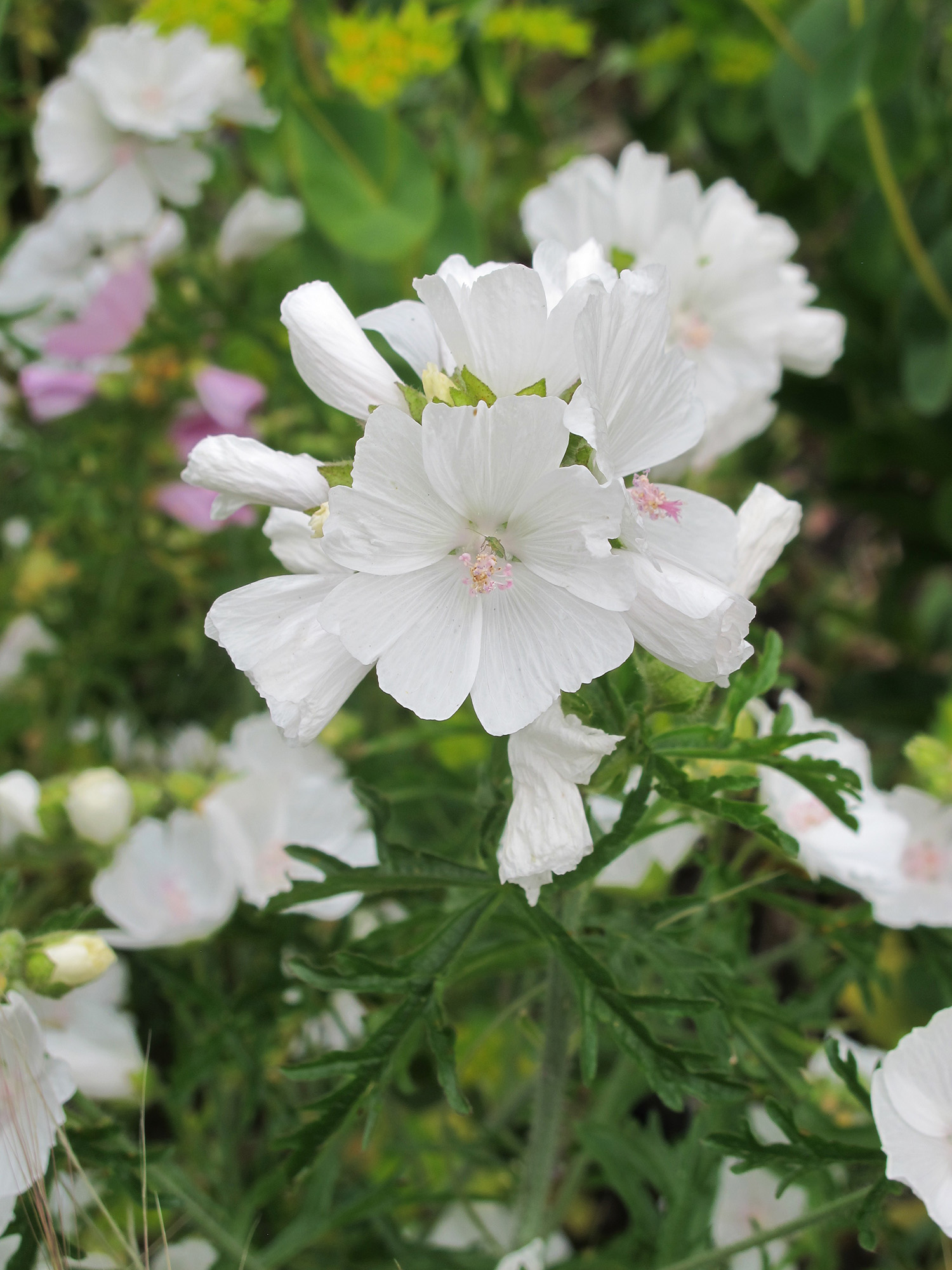At the beginning of May I was extremely lucky to be invited to see the gardens at Worcester College in Oxford’s city centre. It was a perfect May afternoon and the stone walls were dripping with wisteria, so the timing couldn’t have been more perfect. The lawns were like green velvet and I’m sure that Ronnie O’Sullivan could have had a game of snooker on them: they were so smooth. It’s all down to the excellent Head Gardener, Simon Bagnall, and his equally excellent team.
During the visit Simon showed us the archway, leading to a subterranean passage. He told us that walking through it had inspired Charles Dodgson, the creator of Alice in Wonderland, to write his now famous book in 1865. The moment of awe was short-lived, however. Someone from Christchurch College immediately dissed the suggestion and said it was Christchurch that had inspired this mathematician and Dodgson was based at there. We shall never know the truth.
Worcester College is a dreamy garden with a tranquil vibe and, on returning home, I felt inspired and refreshed to tackle my own modest plot, even though the lawns are far from perfect. That feeling was short-lived. Something had begun to make a burrow, about a foot in length, underneath my raspberry bed. We (the royal we that is) filled it in, but it reappeared the next day and the saga continued for over a week. I began to fret and examine the lettuce plants, the carrots and the cabbages for tell-tale nibble marks, but nothing seemed to have been touched.

I blamed rabbits. They shouldn’t even be here. They aren’t native to this country. The Normans are thought to have introduced them in the 12th century, for their meat, and there are plenty of Warriner Farms round and about. It could be worse though. A few days after my Worcester College visit, I did a gardening talk in a village close to Salisbury Plain. The gardens there were being ravaged by deer and somehow that put my troubles in perspective. On balance deer do more damage than rabbits. They have bigger mouth and larger stomachs and they strip bark away and kill plants.
Thoughts about rabbits and deer were soon replaced by another set of worries about the dry spring, warm days and frosty nights. These are the worst growing conditions and you find yourself watering and fleecing plants to try to encourage them to grow.
Then quelle horreur! My morning cuppa in bed was completely ruined by by the sight of a hare running down the garden path. I knew it was a hare straight away. Hares run, rabbits hop and show their white tail as they go. Hares have brown fur, rather than grey, and hares are larger than rabbits. My trespasser was a young hare, so there were no dark tufts on the ears, and we think it was digging the hole as a night-time refuge during the chilly nights. We had become a Hare B & B and we have history with hares. One year a young hare nibbled out the runner beans every time they began to climb and we replanted them again and again. We didn’t harvest a bean that summer and he spread himself around the village, so we were just one of his eateries.
We are fortunate to have hares in the fields roundabout and sometimes they sunbathe in the field right next to the garden. I love to watch them and their numbers are increasing, according to the People’s Trust for Endangered Species website. In the last 5 years, up to 2022, there’s been a 39% increase. It’s partly due to the them being resistant to the RHDV2 virus affecting rabbits.

Hares like eating cereals best of all, but the dry weather we’ve had has led to minimal growth in the wheat crops. It’s probably not just that though. Wheat is expensive to produce on thin Cotswold soil, because fertiliser costs have gone through the roof in the last four years and yields have been low. Black grass has also taken a hold, probably encouraged by wet summers and winters. Our local farmers, including Countryfile’s Adam Henson, are planting green manure crops and clover leys to boost fertility. The hare visiting our garden was probably finding little in the way of cereal crops and has started to explore.
A lot of gardeners in rural areas are plagued with rabbits, but rabbits (and presumably hares as well) are fussy eaters. They don’t enjoy thorny plants so berberis, holly and cotoneaster are not on their menu. They will nibble newly planted roses, but once mature your roses should be safe – although deer will crop them. Rabbits ignore box, although someone will have had their box cropped, I dare say, but that’s probably down to hungry box moth caterpillars. Rabbits are supposed to ignore box, cherry laurel, flowering currant (Ribes), philadelphus, buddleja, Daphne and elder.
Rabbits shun most aromatic plants as well and that includes rosemary, lavender, salvias, culinary sage, nepeta and monarda. Many of these plants have foliage covered in aromatic oils and it’s too pungent for the rabbit’s taste buds. They don’t enjoy hairy foliage either, so Stachys byzantina is left alone.
The toxic buttercup family, or Ranunculaceae, contains plants with unpleasant alkaloids. Our most toxic plant, the monkshood or aconitum, belongs to the buttercup family. It has the common name of wolf bane because the roots, the most toxic part, could kill an animal the size of a wolf if ingested. Rabbits are a lot smaller, but they’d avoid most plants with bane in their name, because these are poisonous. The other banes include fleabane (erigeron), hen bane (Hyoscyamus niger), leopard’s bane (doronicum) and baneberry (actaea). They also shun foxgloves, or digitalis, for they are toxic too.

To go back the buttercup family, we grow lots of them in our gardens and they include clematis, aquilegia, thalictrum, anemones, delphiniums and hellebores. These have evolved to produce alkaloids that deliberately deter grazing animals. New Zealand plants, such as corokia or wire-netting plant, have also learnt to repel grazing animals by being unpleasant to eat. I suppose I should be grateful that it wasn’t a wallaby! These Australian natives were introduced in 1870 and they do a lot of damage in New Zealand.
Although the Normans are credited with introducing rabbits in numbers, the Romans also came with rabbits and hares. Neither are native to the UK. Ground elder, a weed I struggle with and will never get rid of, came to Britain as a medicinal plant and one common name is gout weed. It was also grown to feed the rabbits and the Romans get the blame for this one as well. In all my years of weeding it out of this garden, for 20 years now, I have never seen a nibble mark on one single leaf in the garden, or in the fields nearby. I wouldn’t mind one bit if rabbits ate this one. It would save me a lot of work.
If the worst happens, my penstemons will also be safe, so will my phloxes, although the pigeons usually get those early on anyway. Rabbits will also leave my pinks alone and my peonies will be safe too. I should get a good show from the sedums and euphorbias, for both have milky sap. I can also plant pot marigolds, or calendula – although rabbits will destroy most annuals in short order should they get the chance.

They won’t touch snapdragons, or antirrhinums, apparently. Your lily of the valley will also be safe, although I’ll be weeding that one out myself. It may look delicate, but it’s an iron lady and, apparently it was out late Queen’s favourite flower. My advice is to grow lily of the valley in pots and force it in your Hartley greenhouse. The mallows and poppies are left alone too and my woodbine, Lonicera periclymenum, is also safe.
Anyway, if the hare I saw does take up residence more permanently, he’ll be too busy feasting my runner beans and lettuce to bother with my flowers.



